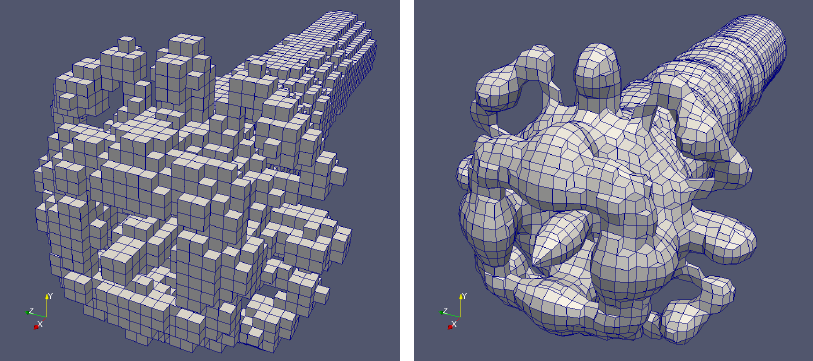Kitware Releases ITK 4.9 to Further Rapid Evolution in Medical Imaging

ITK employs extreme programming methodologies in latest development cycle.
On behalf of the Insight Segmentation and Registration Toolkit (ITK) community, Kitware announced the release of ITK 4.9.0. ITK is an open-source software library for processing medical images. The 4.9 release revealed new features, capabilities, and performance enhancements that provide innovations as well as core functionality to the field of medical imaging.
“Development for the 4.9 release focused on ensuring that ITK remains modern and scalable,” Dr. Matthew McCormick, the lead developer of ITK at Kitware, said. “ITK is integral in many research projects and commercial products on a global scale, so it is important that ITK grows along with the medical imaging community and takes advantage of advances in computing technologies.”
Version 4.9 launched new modules, filters, and analysis algorithms to significantly expand ITK’s capabilities. The Cuberille module, for example, builds high-quality three-dimensional (3D) models for use in biomechanical simulations. In addition, the AnisotropicDiffusionLBR module utilizes lattice basis reduction to diminish the effects of noise in an image, while it maintains the fine details in the image.

Enhanced for speed and portability to Python, other noteworthy improvements made to ITK include performance optimizations on advanced voxel data types. The release also updated Python wrapping in ITK to make it faster and easier to compile with better documentation than ever.
“We see the new standard for medical imaging research and development become centered on adding methods to ITK and making them seamlessly available in C++ and Python,” McCormick said.
Moreover, the 4.9 release introduced continuous integration testing on GitHub and presented the ability to extend ITK with external modules defined outside of the ITK source tree. Version 4.9 also added functionality to ITK to make it possible to generate morphological operators from an image, perform registration operations on point sets using time-varying B-splines, and more precisely control dependencies between modules during ITK build and test procedures.
“ITK is a collaborative effort that has a role in all levels of medical imaging research,” McCormick said. “To present community members with up-to-date resources for using and contributing to ITK, Kitware plans to publish a new version of ‘The ITK Software Guide.’”
ITK provides developers from around the world with an extensive suite of software tools for image analysis. ITK’s development began in 1999 to support the Visible Human Project. Today, ITK continues to expand, delivering leading-edge algorithms for processing multidimensional magnetic resonance imaging (MRI), computed tomography (CT), ultrasound, positron emission tomography (PET), fluoroscopy, and microscopy data.
Built with CMake, ITK supports cross-platform development in C++ and Python. Users can access much of the functionality of ITK with the graphical user interface of the 3D Slicer application. To download ITK 4.9, go to http://www.itk.org. To learn how to leverage ITK and Kitware’s medical computing expertise, please contact Dr. McCormick at kitware@kitware.com.
This material is based upon work funded, in whole, by a $781,998 award from the National Library of Medicine.